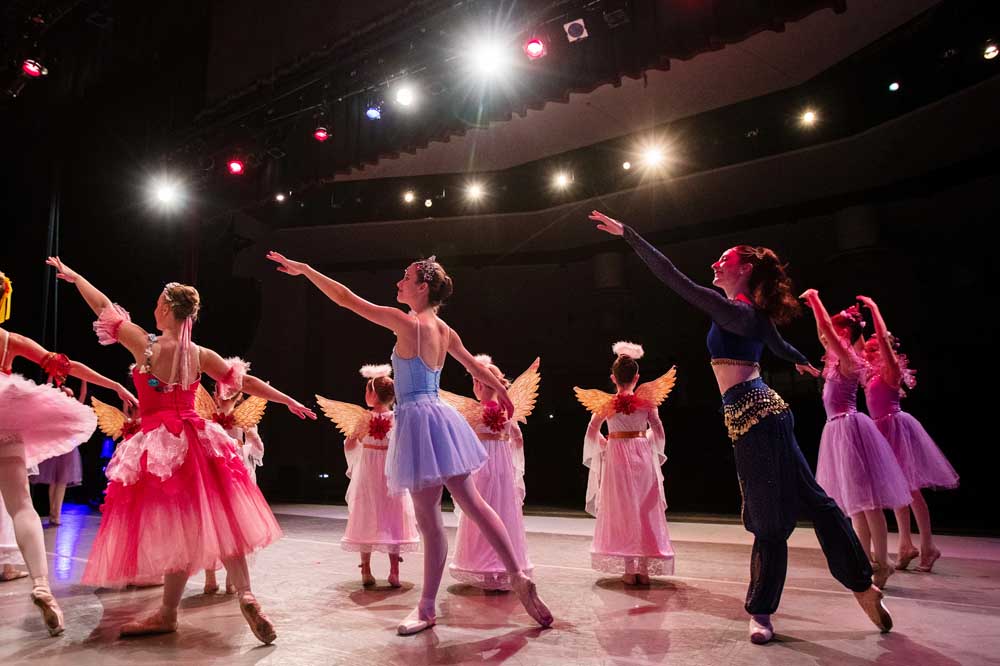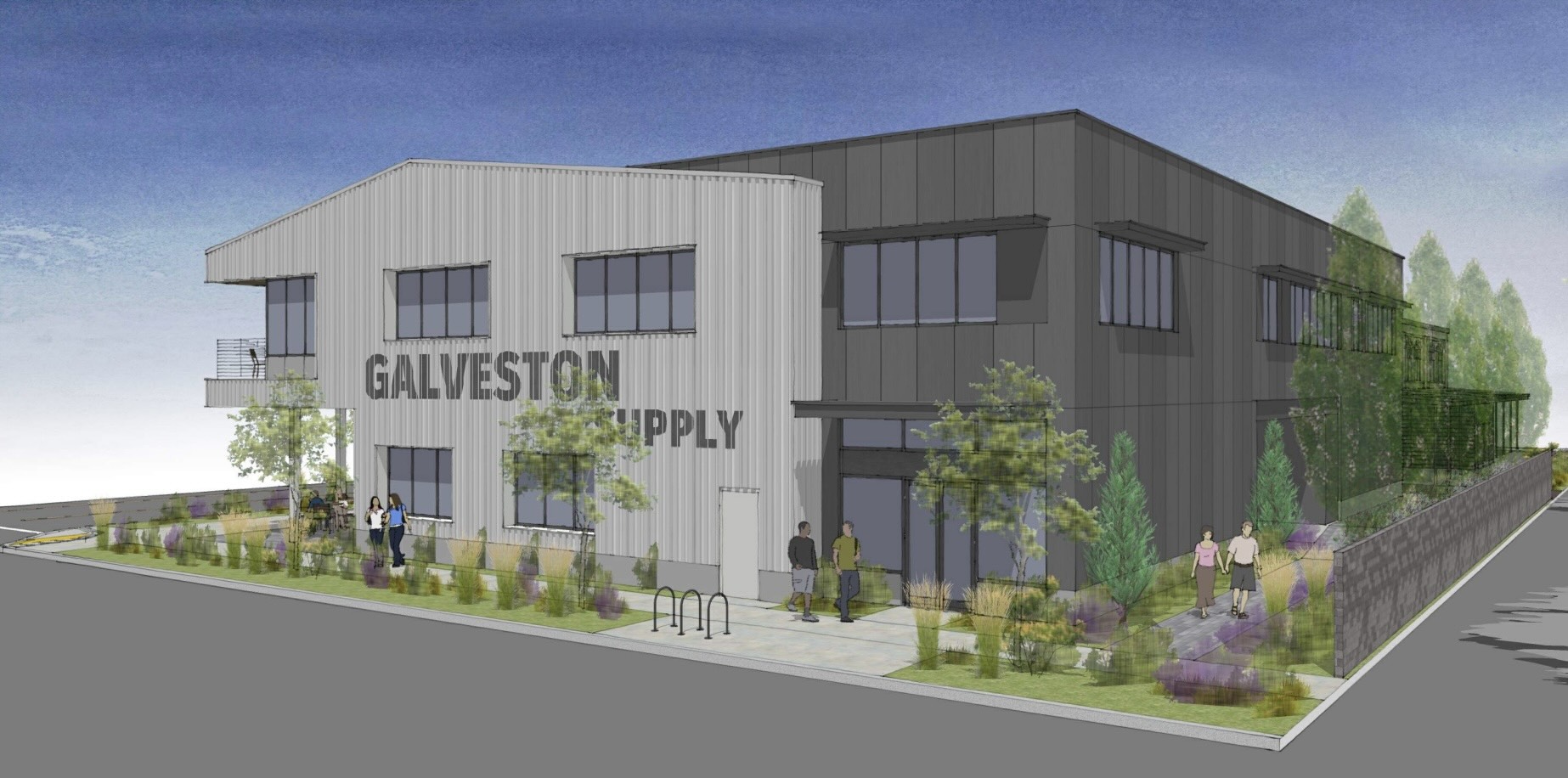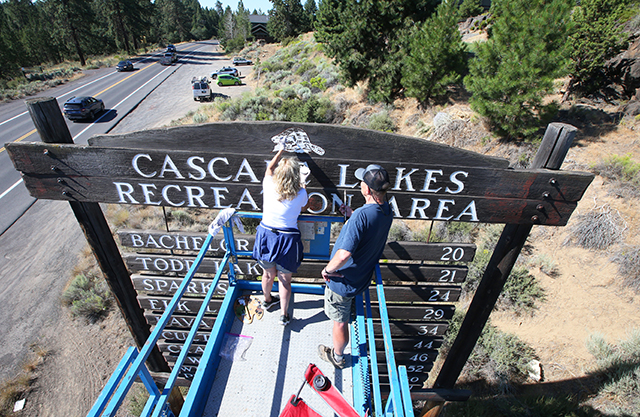Stakeholders aim to take Central Oregon Center for the Arts from concept to reality
Published 5:45 am Tuesday, December 31, 2024

- A group of dancers rehearses for Central Oregon School of Ballet’s production of “The Nutcracker” at the 600-seat Mountain View High School. In previous years, the performances averaged audiences of 1,100 each. To accommodate such audiences, the school booked the auditorium for two consecutive weekends.
Even before the abrupt demolition of the 1,400-seat Bend High School auditorium last summer due to failing roof supports, a movement was afoot to bring to the Bend area a large multi-purpose arts facility with a large stage, plentiful parking and seats and accessibility for a variety of users.
The proposed Central Oregon Center for the Arts (COCA) has plenty of strong support — particularly from the orchestras, choirs, dance companies and other stakeholders that would put it to use.
Trending
The destruction of what had been the largest arts hall in Bend was a major loss for arts organizations including Central Oregon Symphony and Central Oregon School of Ballet, both of which relied on Bend High to present their concerts and performances to larger audiences.
Bend High auditorium demolition: Almost all contents destroyed
“The capacity of that auditorium was more than double what any other theater in town is. Beyond that, it (was) also the largest stage,” said Joshua Deininger, co-director of the ballet school, which moved its December performances of “The Nutcracker” to Mountain View High School. “We put on very large-scale productions. Classical ballet traditionally involves a lot of props, a lot of cast members.”
“We’re very happy to have a place to do it, but it’s a 600-seat auditorium, which has its advantages, but we’re used to doing 1,100 (people) per show, on average, for ‘Nutcracker,’” Deininger said. “To even run the same amount of audience members through, we had to book two weekends.”
Trending
Michael Gesme, a member of the COCA board and artistic director and conductor of the Central Oregon Symphony, led the community orchestra’s Fall Concert, its first of the season, at the smaller Caldera High School auditorium in November.
“The shift to a space with only 600 seats, the approximate size of all large auditoriums in our region, has meant a reassessment of how to achieve one of the core goals of the Central Oregon Symphony: to make symphonic music accessible to anyone,” Gesme said. “Until a large space is once again available in Central Oregon, we will continue to assess, adjust, and adapt in order to best serve the varied populations of our region.”
Central Oregon Symphony hosts first concert in new home
Getting creative
Theater groups lacking their own permanent home are used to getting creative with their productions given the limited number of large stages available in the region, noted Ray Solley, executive director of the Tower Theatre Foundation.
“The number one need that the community is saying is, ‘We need more rehearsal space’ and ‘We need performance space,’” Solley said.
In the meantime, “They’ve come up with, I think, really innovative, and game-changing approaches. Theater companies such as Ellipse Theatre Community, which takes its shows out on the road into different locations, as opposed to the location being static and everyone goes to it,” Solley said. “Another company, Ponderosa Players (did) ‘Midsummer Night’s Dream,’ and they did it outside, in a park, in a forest.”
Into phase two
Granted, the Central Oregon Symphony probably won’t be lugging cellos, tubas and timpanis into Deschutes National Forest. Gesme is among those who can recall previous editions of the effort to bring a dedicated arts center to the Bend area that date back to the ‘90s. The current COCA effort to bring such a space to life began in 2017, said Laura Thompson, president of the COCA board.
In 2019, COCA incorporated as a 501(c)(3) nonprofit, and in 2022, a seven-month feasibility study conducted by the Arts Consulting Group showed area residents’ strong support of the arts facility. That was phase one of COCA’s multi-year plan, “which gave us the guidelines for moving forward.”
Those guidelines informed phase two, in progress now and continuing into 2025. With the help of research, architecture, construction and fundraising partners, COCA’s phase two has involved building a business plan, determining users and fundraising feasibility and presenting three model concepts to show potential funders.
The list of potential users tops out at 30 organizations, including the Bend Pops Orchestra, the Latino Community Association, Central Oregon Mastersingers, Ellipse Theatre Community, OperaBend, Scalehouse, SFF Presents and Sunriver Music Festival, to name only some of them.
Proposed concepts range from small to large, with an increasing number of seats, rooms and performance spaces going up with size. A fundraising feasibility study by Netzel Grigsby Associates is expected to be completed by late February and will help identify which gets built, according to Thompson.
“It will basically tell us whether we can afford at $75 million facility or a $175 million facility,” Thompson said. “The people they will be interviewing will have a view of what each of those levels will look like.”
When will it be built?
Once the size, shape and cost of the Center for the Arts are finalized, it will be on to phase three: fundraising and construction.
“The need is there, we all know that, but we have to build this huge, strong foundation in order to build upwards to meet the needs that are identified,” Thompson said.
“They say it takes 10 years to build a performing arts center,” she added. Counting from when COCA became a nonprofit, five years has passed.
“We’d like to be in by ‘29, so that’s my goal,” Thompson said. “This feasibility study will be our roadmap to the next five years.”
Small stages proliferating,
Solley says
Ray Solley of the Tower Theatre Foundation notes one bright spot regarding the number of performance spaces in the Central Oregon region, which may be of little comfort for those struggling with groups seeking larger stages on which to perform.
After one meeting of the nonprofit advocacy organization Envision Bend, Solley and colleagues got to counting the number of small stages around Central Oregon, which they believe over the past 15 years has grown to about 35, not including amphitheaters, pop-ups or school auditoriums.
Solley called it a “back-of-the-envelope tally” of places such as Volcanic Theatre Pub in Bend and The Belfry in Sisters.
“(We were) looking at stages that were out there, places in communities and neighborhoods where you could put a performer or two or a small band,” Solley said. “You very quickly realize there’s one in pretty much every place, in a lot of retail spaces and a lot of restaurants.”
“There is no lack of performance space for smaller bands, solo and duo musicians,” he said.







